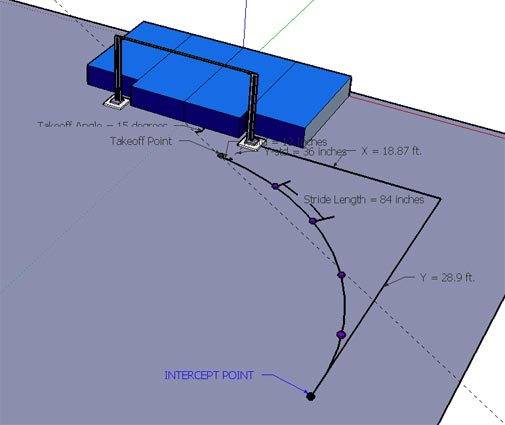 Figure 3.16
Figure 3.16  RILEY NORMAN!!!
RILEY NORMAN!!!  Figure 3.16
Figure 3.16  RILEY NORMAN!!!
RILEY NORMAN!!!  figure 2.4
figure 2.4 Figure 2.74
Figure 2.74
Sprints: undoubtedly the easiest category of running in track and field. Sprints offer a number of events that involve well... sprinting! The thing to know about sprinting events is that it's not only about who is the fastest, but how long a sprinter can hold their top speed. A sprinter that isn't as fast out of the blocks as another sprinter still has a chance to get the gold if he or she has a greater endurance power. I'm not saying sprinters should run 70 miles a week to build up their endurance but I'm definitely saying it's overlooked by many sprinters and coaches for that matter. An example of how overlooked it is, is when a sprinter crosses the finish line and flops around on the ground gasping for air for about two minutes when they only ran a half or a quarter of a lap. It doesn't make much sense to me but from their perspective and training a half a lap feels like a mile because most of their training is done in shorter distances like 50 meter sprints to work on speed.
The 3 main sprints are known as the 100 (quarter of a lap) 200 (half a lap) and the 400 ( full lap). The sprint relays involve the 4x100 (everyone runs a 100), the 4x200 (everyone runs a 200), and the 4x400( everyone runs a 400).Cadillac's program has very few natural sprinters, but with the help of the "Triple Entente" of coaching starring Mr. Todd Money-Maker Baker, Laura Speed Demon Dahlquist, and "Miles" Michelle Brines, After only a couple of weeks of training anyone can be a sprinter! I mean I'm not just making this up because we desperately need sprinters. I'm saying this because our good coaching needs to be appreciated! If you don't believe me take Lisa Metzger's word for it. Lisa is one of Cadillac's number one sprinters of all time. Lisa has many conference and regional titles showing that Lisa is living proof of our flawless sprinter program. A quote from the amazing Lisa about her opinion on sprints in general and her training states, "I do sprints because I am naturally fast. I learned this my freshman year when I was thrown into several varsity relays because of my speed. After years I am now even faster and hungry for another regional, conference, and hopefully state appearance." Wow, inspirational to say the least. Now that we've introduced you to our local athletes and their program let's cover the basics of sprints!
Event: 100 meter dash. This is the shortest of all the sprints and it is exactly 1/4 of a lap. This event really shows the true speed of any athlete since it's focus is on acceleration out of the blocks and a tad bit of endurance.
Event: 200 meter dash. This is the middle sprint, and just like the middle child of a family, this sprint is usually ignored or not watched. It's lack of spectators stems from the shift of the start line from the head of the track near the fans to the complete opposite side where no one is.
Event 3: 400 meter dash. This is my favorite sprint of all time because usually about half way through most runners are gasping for air, thinking about quitting track, or feel like they're dying in general. Evan Lee, Cadillac's fastest 400 runner says, "Ughhh I really don't want to run this..." before every race to get himself jacked out of his mind to win!
The thing to remember about sprints is that you have to run a lot of sprints to become a good sprinter and there's always going to be a guy from Rockford that'll be faster than you.